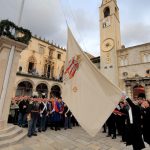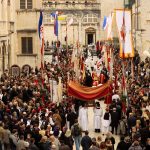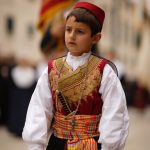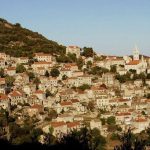In the last twenty years, the number of horses in Croatia has increased 5.5 times.
As Poslovni Dnevnik writes on the 17th of January, 2018, the number of horses in Croatia has drastically risen in Croatia over the past 20 years owing to the numerous customs and traditions across the country which involve their participation.
While other livestock and animal numbers have been in decline over a number of years, according to the latest data (comparison of 2016 to 2013), the number of horses is increasing. Statistics show that the number of poultry decreased by 23.8 percent, pigs by 20.3 percent and dairy cows by 13.9 percent, while the number of equidae increased by as much as 40 percent. In Croatia, the Agricultural Agency points out that among other reasons, the number of horses has risen as there is an increasing number of organised activities involving horses, such as sports competitions, as well as traditional cultural and folklore events which are largely represented by horses (especially those of the Lipizzaner breed).
Slavonia and Baranja in particular have a number of traditions involving horses, as well as a special connection with them.
The annual growth of equidae:
Preliminary data indicates that the growth trend of the number of equidae continued in 2017, with 23,209 horses (1,9% increase compared to 2016), 3,252 donkeys (13,6% increase), 18 mules (an increase of 20 %) and even 3 zebras (without change). Statistics show that in recent years, the number of horses is growing at an annual rate of 1.5 to 5.5%, with the only exception being back in 2014 when a drop of 1.5% was recorded, says HPA Director Zdravko Barać.
Financial support:
Cash support is provided for protected breeds of horses and donkeys in Croatia. The state also cares about the breeding of warmblood breeds, and through the national program to encourage the implementation of breeding programs for warmbloods in Croatia, the organisation of sports competitions, at which this type of horse does well, is also encouraged.
HPA points out that the most common horse breed continues to be coldbloods (about 55% in total), but in recent years, a coldbloods have been kept at a steady level of about 12,500. On the other hand, a group of warmbloods have been slightly increasing over the past decade.
This is the result of the popularisation of horse breeding and the continuing use of horses in sport and recreation. As far as warmblood breeds are concerned, the largest numbers continue to be recorded with the beautiful Lipizzaner breed, of which 2,118 animals were recorded in 2017, classifying Croatia among the countries with the largest number of Lipizzaners in the world.
Breeding traditions:
This is the result of the long tradition of Lipizzaner breeding in Croatia, an act recognised by the Ministry of Culture, which included the tradition of Lipizzaner breeding in Slavonia, Baranja and Srijem on the list of Croatia’s non-material culture last year. It’s also worth mentioning the protection of native and protected breeds of equidae that the Ministry of Agriculture encourages financial support for, encourages the proper preservation of genomes and the genetic variability of breeds which are of particular interest to Croatia.











